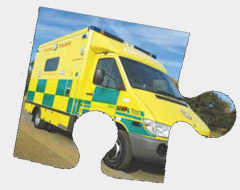Feature / All together now
Click here to download a PDF version
At the end of March, Monitor gave the green light to its renamed costing transformation programme (CTP). Its proposals remained largely unchanged from the original plan set out at the end of 2014. However, as a result of sector feedback, minor timetabling changes mean ambulance trusts would move back a year in their implementation. Community trusts would start development earlier, while retaining the same deadline for their first mandated cost submission.
The Monitor timetable recognises different parts of the NHS are at different stages in their readiness to implement patient-level costing using a common, centrally dictated approach.
Each sector will follow a four-year implementation plan, involving two development years, a voluntary cost submission and then a mandated collection. Start dates will be phased for each sector.
Acute providers will lead the way. They have in general made more progress with patient costing – in part driven by the more established national tariff. Mental health trusts are typically not so advanced, with challenges around having the right data to enable the allocation of costs to service users. But many are pursuing a more granular approach to costing and HFMA standards have been developed to support this.
Mental health trusts will start their four-year implementation in 2016 alongside ambulance trusts, where there are still issues to address. Community services – provided by freestanding community trusts and as part of trusts delivering acute and community or mental health and community services – will start in 2017, with the first mandated cost submission covering 2020/21 data.
The reality is that readiness of NHS providers to meet the costing proposals ranges from sector to sector and within each sector. Each provider’s ability to respond to the proposals will depend on several factors, including: the trust’s existing costing system or need to implement a new system; the size and experience of the costing team; the data already available or the need to implement new feeder systems; and, perhaps crucially, the finance director and board commitment to costing and use of costing data.
As an example of these different starting places, we look at where four types of provider are up to in their own costing journeys and their initial views of the Monitor plans. And in the following section, we get suppliers’ perspective.
Supplier thinking
NHS providers with modern patient-level information and costing systems (PLICS) in place are keen to get on with the changes proposed in Monitor’s costing transformation programme, according to costing suppliers.
Staggered start dates for different sectors mean the first comprehensive mandatory cost collection using the new approach will not be until the summer of 2021. But Sebastian Kerr, associate director, with Bellis Jones Hill, which supplies the Prodacapo costing system, says most of the company’s clients would have preferred a ‘more aggressive timetable’.
‘They have already got software that is capable [of delivering Monitor’s proposals] and know there will be no additional cost in making the software compliant, so they just want to get on with it as soon as they can. Most are keeping a watching brief until they see the details behind the proposals.’
Monitor has also firmed up plans to develop a software accreditation process to assure providers that their systems can follow the prescribed costing approach.
Mr Kerr says that overall this would be helpful, although suppliers and practitioners needed to understand how the accreditation approach would work. But he says that inevitably the time needed to develop the accreditation process could lead to some trusts deferring implementation pending the outcome of the accreditation process; something that could put the achievement of Monitor’s chosen timelines at risk.
Managing director of system supplier Healthcost Gavin Mowling (left) also believes the accreditation process will provide a ‘wake-up call’ for some suppliers that haven’t moved with changes in costing approaches. ‘Trusts have often believed they have a PLICS system because they output costs at a patient level. But if all day case patients in a healthcare resource group have the same cost, this is because the system is averaging costs across all patients. You are costing the classification, not the resources consumed,’ he says.
System accreditation will help ensure all systems meet basic standards in deriving real patient costs, but Mr Mowling is keen for accreditation to go further. Rather than accreditation providing a simple yes or no rating for a system, he wants it to help users to differentiate between costing systems and include an element of user feedback.
Graham James, director of CACI, which provides the Synergy costing system, says the staggered timetable makes sense but is concerned some organisations might focus too much on the ultimate deadline of their first mandatory collection. ‘My advice is don’t leave it until the last minute to make
the transition,’ he says.
Overall he thinks the timescales are achievable, but he has a slight concern about the internal resources trusts will be prepared to commit to costing. The new approach may also change how service line positions are reported in some trusts. ‘Some providers will have costing models set up to suit their business and will need to be revised under the new system,’ he says. ‘For some, they may need to dual run initially because they won’t want to impact on their business’
Steve Haines, managing director of the public sector costing division of Civica, which supplies the Costmaster system, agrees that patient costing is not something you switch on but needs to evolve. And so trusts need to get started if they haven’t already.
‘Hopefully the Monitor plan has given a steer to organisations – if you don’t have a plan, put one in place,’ he says. ‘There are still people doing too much top-down costing and the sector is still only scratching the surface of the value of patient level cost data.’
Board-level support and recognition of the value of costing will be vital, adds Mr Haines – as is understanding that it is about developing information to inform strategic decision-making rather than simply ticking a box.
|
Acute: early guidance key to progress Countess of Chester NHS Foundation Trust is no stranger to patient-level costing. One of the early implementers of the approach, it now boasts more than six years’ experience of allocating costs down to patients. Helen Fullwood, costing and performance adviser at the £200m Cheshire-based district general hospital, says the trust has established a good patient-level data set. ‘We have theatre information at patient level and radiology and we use pathology and therapies data to a certain degree. So we have reasonably good drivers for our costs. We are not using standard costs or averages.’ The trust scores consistently in the ‘bronze’ range in the materiality and quality score (MAQS) system, published as part of the HFMA clinical costing standards. As well as underpinning the annual reference costs return, the patient-level cost data – produced using CACI’s Synergy costing system – helps the organisation understand profitability of different specialties as part of its service-line reporting/management system. Patient-level cost reports – generated using QlikView – can be accessed across the trust, although budgetary performance remains the main performance management tool. ‘The costing data is used in a more strategic way, informing our business planning process and as part of specific service reviews,’ says Ms Fullwood. She says the trust’s ambition is already to achieve a silver MAQS rating and sees the Monitor proposals as reinforcing this improvement plan. The timetable looks ‘ambitious but achievable’, but she adds that detailed guidance and requirements will need to be provided to trusts with good notice. ‘We need to establish early on any required data sets,’ says Ms Fullwood. ‘While tariff-driven inpatient and outpatient data sets are mostly well established, the quality of some non-standard data sets isn’t that great or is captured in a non-standard way – particularly around community services.’ Systems will need to be set up to capture these, but that is unlikely Ms Fullwood believes the planned system accreditation process will be useful. She says the trust would have been looking to review its current system about now anyway, but is now likely to wait until systems have been through an initial accreditation process. ‘In some ways, we might have looked at our system earlier if the Monitor proposals hadn’t come along. And if a review indicated we needed to replace our system, then clearly there is a resource impact in terms of implementation.’ Again she suggests the sooner guidance and accreditation is issued, the trust will be better able to respond to the Monitor proposals. She also sees the merging of the education and training cost process into the annual cost return as a stand-out challenge. ‘It is still a fairly manual process and quite subjective and it is hard to see how it can be built in so that it becomes simply another data feed,’ she says. The trust has yet to decide if it will apply to pilot the new system as a roadmap partner. |
|
Community services perhaps face the greatest challenge in meeting Monitor’s costing transformation plans. They have more significant challenges with the collection of data to enable the accurate allocation of costs to individual patients. The £135m turnover aspirant foundation trust has implemented the SystmOne electronic patient record and a recent board report suggested it had a nearly 80% completeness rate for the community information data set (CIDS1). The trust has also been implementing service line reporting for a few years, using the Civica Costmaster software. ‘We have the SLR system in place, but it is not yet embedded in working practices,’ says trust finance director Phil Bradley. ‘We’ve done lots of groundwork, mostly finance-led, and are beginning to use it for cost improvement programmes. On the The trust has a lot of data being collected at individual patient level and so has a good foundation to meet Monitor’s proposals. Mr Bradley says the trust needs to improve the usefulness of its data. ‘We need to improve the start and finish times we are recording and we need to start working on how we can record the acuity of patients seen in different contacts. And we still need to move another 250-300 staff onto mobile devices. We are committed to doing this, but there are competing priorities.’ This is where the centre can help, says Mr Bradley. ‘Better costing at the patient level is the right way to go,’ he says. ‘It delivers robust costs at service line level, with the added advantage of being able to drill down and see where the variation is. If all organisations are using the same costing method, we can get into benchmarking. It will help inform some proper currencies and help to understand the relative costs and benefits of moving more services into the community.’ But he says that in the current financial climate, it can be difficult to convince boards that more investment in finance will have a direct or immediate impact on the value of services delivered. ‘Better costing should be self-funding. Organisations need to understand their cost drivers so they can identify opportunities to become more cost efficient. But there needs to be greater evidence-based understanding of this connection.’ Monitor has committed to developing a value-for-money case for its proposals and Mr Bradley says this will be key to further progress. The trust has struggled to appoint a cost accountant at the right level to drive its costing improvement and support its service line reporting programme. Yet Monitor has suggested many organisations will need to double their costing practitioner numbers to deliver the new requirements. Mr Bradley admits grading has been an issue in the recruitment process. But costing activities and the annual reference cost have been delivered as an add-on by other team members. Better understanding of the importance of costing and its direct link to value, alongside a higher profile for the function, will help, he says. 1 The community information data set was introduced in 2012 but has only been issued for local use. No central collection has yet been made. Current plans are to incorporate the data set within an expanded children and young people’s health services data set. The Health and Social Care Information Centre says the first national submissions of the CYPHS data set are planned for October. |
|
Kent and Medway NHS and Social Care Partnership Trust provides mental health and social care services. It is one of the larger mental health trusts in the country serving 1.6 million people from 90 sites. It has a budget of around £180m. Deputy director of finance Ada Foreman says the trust’s clear focus this year is on the ‘I’ (the information) in PLICS. She says the trust’s costing system is capable of cascading costs to patient or service-user level, but the trust doesn’t have all the right data or activity systems to drive those costs down to patients. ‘We are not at the level of the acute sector yet,’ she says. ‘We have very little weighted distribution of costs and some key cost drivers that are difficult to collect activity on.’ Inpatient stays still make significant contributions to patient costs. She says the trust is confident in its costs at cost pool group level – for example, ward costs. But below this it becomes more of an averaging exercise, with length of stay the key driver used. ‘We know that in a ward, more cost arises when you have special observations in place, perhaps for service users with psychotic disorders. We haven’t developed weightings or processes to capture the activity to accurately allocate these higher costs to service users.’ Community visits are another area. Often the only data the trust has about community psychiatric nurse time is the number of service user visits they have made. With no specific time logged, the activity system defaults to a 30-minute visit, but the trust recognises that accurate service user costs will need better data. Ms Foreman says the costing team is planning to share cost data with clinicians this year. In part it hopes this will help engage clinicians so they see the information as meaningful to the delivery of care, challenge the data where appropriate and help to identify the data needed to improve allocations. ‘It is vital that, at the same time, we identify ways to improve the data without putting unnecessary data collection burdens on frontline staff,’ she adds. She welcomes the Monitor costing initiative, particularly as this may help establish the data that all mental health trusts need to be collecting. However, she says that collected cost data needs to be used responsibly. ‘You can’t necessarily compare costs from one provider with another,’ she says, even if they are following similar costing approaches. ‘The services supporting the delivery of a cluster pathway that organisations provide will be different from provider to provider.’ Ms Foreman says that it is also particularly important that commissioners understand this, given that prices are still set locally for mental health trusts. |
|
The external focus for ambulance services currently in terms of costing is reference costs and the annual return. But Richard Wheeler, finance director of East Midlands Ambulance Service NHS Trust, says all 10 of the ambulance trusts work together to support a consistent approach to reference costs. ‘Any initiative that enables us to produce more comparable data and enable us to benchmark better has got to be a good thing,’ he says. On paper, ambulance services look a simple proposition for any costing work, which is probably why they were originally set to be one of the first sectors to transition to the new approach. Their currency involves just four activities (or cost objects): calls; hear and treat; see and treat; see and treat and convey. But the focus of this recording currency is incidents, events and journeys, rather than patients – a road traffic accident may have multiple patients, but would be recorded as one incident. And given that performance management is centred around response times, and interaction with patients tends to be brief, it is perhaps a little harder to see the value of attaching costs to specific patients. There are also fundamental difficulties as ambulance trusts don’t necessarily capture data to identify all the patients they interact with – especially when patients are unconscious or having breathing difficulties. ‘Patient-level detail is one of our challenges,’ says Mr Wheeler. ‘But we only have partial information East Midlands has no dedicated costing system, with costing effectively a spreadsheet exercise. ‘We’d need to understand if we could capture patient details in our existing approach,’ he says. These challenges have been recognised in the delay to the costing timetable for ambulance trusts. Mr Wheeler says a Monitor workshop also suggests the regulator recognises that ambulances have a different context. Mr Wheeler says ambulance services do provide a key part of patient care pathways and understanding total patient pathway costs will be useful. There is also still enthusiasm to see national prices for ambulance services and better cost data could move this forward. However, there are other challenges to overcome before tariffs could be implemented, including taking account of journey distance and time and how other local services impact on what ambulance services actually do. |
Related content
The Institute’s annual costing conference provides the NHS with the latest developments and guidance in NHS costing.
The value masterclass shares examples of organisations and systems that have pursued a value-driven approach and the results they have achieved.


 Mental health: Putting the 'I' into PLICS
Mental health: Putting the 'I' into PLICS Ambulance: costing journeys
Ambulance: costing journeys